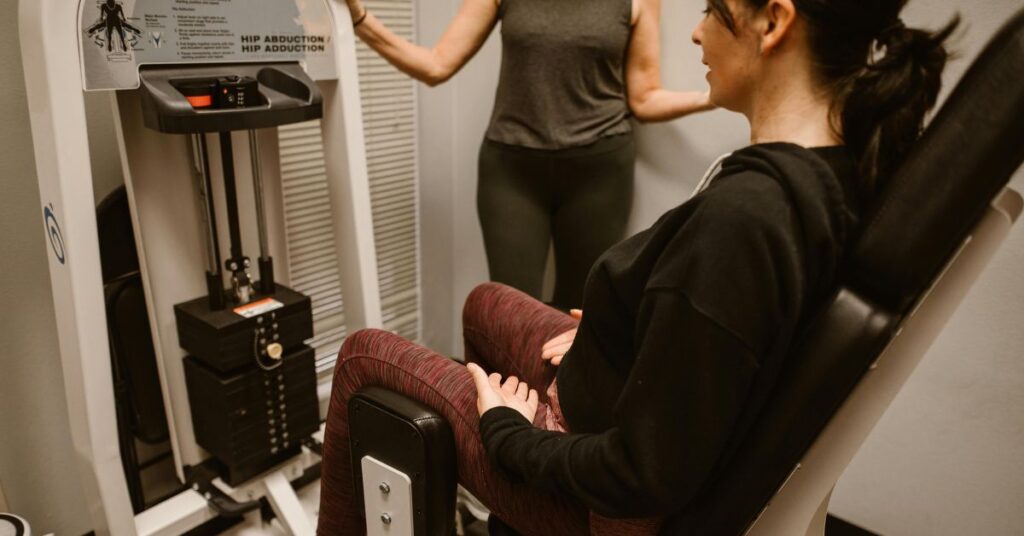Premenstrual Syndrome (PMS) and menstrual cramps are common experiences for many women during their monthly cycles. These symptoms can range from mild to severe and often include mood swings, fatigue, bloating, headaches, and sharp lower abdominal pain. While rest and medication are typical remedies, regular exercise is emerging as a natural and effective approach. This article explores how exercise can positively impact PMS and menstrual cramps, and which types of workouts provide the most benefits.
Understanding PMS and Menstrual Cramps
PMS refers to the combination of emotional, physical, and behavioral symptoms that occur before menstruation begins. Menstrual cramps, also known as dysmenorrhea, involve pain due to uterine contractions. These issues are closely linked to hormonal changes in the body, especially fluctuations in estrogen and progesterone. While these symptoms are a normal part of the menstrual cycle, they can significantly disrupt daily life for many women.
The Hormonal Impact of Exercise
Exercise naturally helps regulate hormone levels. Physical activity increases endorphin levels—chemicals in the brain that act as natural pain relievers and mood boosters. Additionally, consistent exercise helps reduce cortisol (stress hormone) and balances estrogen and progesterone levels, which may lead to milder PMS symptoms and less painful cramps.
Improving Mood Through Movement
How Exercise Boosts Serotonin
Many women experience irritability, sadness, or anxiety before or during their period. Exercise, especially aerobic activities like walking, jogging, or cycling, has been shown to enhance serotonin production. Serotonin is a neurotransmitter that contributes to feelings of well-being and happiness, helping to combat mood swings and emotional distress during PMS.
Role of Endorphins
Exercise also promotes the release of endorphins—your body’s natural painkillers and mood enhancers. These help reduce sensitivity to pain and create a sense of euphoria, often called a “runner’s high.”
Reducing Menstrual Cramp Intensity
Cramping is caused by the release of prostaglandins—chemicals that trigger uterine muscle contractions. Exercise increases blood flow and oxygen delivery to the muscles, which can help relax the uterine area and lessen the severity of cramps. Stretching-based workouts such as yoga and Pilates are especially effective in easing pelvic tension.
Combatting Fatigue with Regular Workouts
Though it might seem counterintuitive, exercising during your period can actually reduce tiredness. Physical activity increases blood circulation and improves oxygen supply to tissues, which helps energize the body. Low-intensity exercises like brisk walking or swimming can lift energy levels without being overly strenuous.
Alleviating Bloating and Water Retention
Bloating is a common PMS symptom that can make you feel sluggish and uncomfortable. Exercise helps regulate the digestive system and promotes sweating, which can reduce water retention. Cardiovascular exercises like dancing or aerobics are especially beneficial in flushing out excess fluids and minimizing puffiness.
Boosting Sleep Quality During PMS
Hormonal changes during the premenstrual phase can disrupt sleep patterns. Regular exercise has been shown to improve sleep quality by lowering stress and anxiety. Activities like evening walks, tai chi, or gentle stretching can prepare the body for more restful sleep, helping manage PMS more effectively.
Best Types of Exercise for PMS Relief
Yoga
Reduces cramps, improves flexibility, and relaxes the body.
Aerobic Exercise
Enhances mood and boosts cardiovascular health.
Strength Training
Stabilizes hormone levels and improves muscle tone.
Swimming
Soothes muscles and refreshes the body without pressure.
How Often Should You Exercise?
To manage PMS and cramps effectively, aim for at least 30 minutes of moderate exercise five times a week. Consistency is more important than intensity. Light to moderate workouts have been shown to provide the most consistent benefits without putting additional stress on the body.
When to Rest Instead
While exercise is beneficial, it’s important to listen to your body. If cramps are severe or you feel exhausted, opt for rest or gentle stretching. Overexerting during this time can sometimes worsen fatigue or irritability.
Mental Health Benefits of Exercise During Menstruation
Mental well-being often takes a hit during PMS, leading to anxiety or depressive symptoms. Exercise provides a constructive outlet to reduce stress, calm the mind, and improve confidence. Over time, women who stay active during their cycle tend to report improved mental resilience.
Scientific Studies Supporting Exercise and PMS
Multiple studies have backed the connection between physical activity and menstrual health. For example, research published in journals like BMC Women’s Health and Obstetrics & Gynecology has found that women who engage in regular physical activity report significantly fewer PMS symptoms than those who are sedentary.
Role of Breathing Techniques and Mindful Movement
Practices like yoga and tai chi not only promote physical relief but also incorporate breath control and mindfulness. These techniques help reduce stress, which is a known aggravator of menstrual discomfort, creating a sense of calm and control during the cycle.
Combining Exercise with Other Natural Remedies
While exercise is powerful on its own, its effects can be enhanced when combined with other lifestyle choices. Drinking plenty of water, reducing caffeine intake, eating a balanced diet rich in magnesium and B6, and practicing relaxation techniques can all contribute to PMS relief.
Common Myths About Exercising During Periods
Many women believe that physical activity should be avoided during menstruation, fearing that it could worsen symptoms. However, these beliefs are largely myths. In fact, light to moderate exercise is not only safe but beneficial. The key is to adapt the intensity and choose movements that feel comfortable.
How Teens Can Benefit from Exercise
Adolescent girls often struggle with intense cramps and hormonal swings. Introducing exercise early in life can help them manage PMS better, build stronger bones, and develop healthy habits that reduce symptoms in the long term.
Tailoring Exercise to Your Cycle Phase
Your body’s energy levels and hormone activity shift throughout the menstrual cycle. For example, higher-intensity workouts might feel easier in the follicular phase, while restorative exercises might be better suited for the luteal or menstrual phases. Learning to sync exercise with your cycle can enhance its benefits.
Social and Emotional Benefits of Group Activities
Joining a group fitness class or going for walks with friends during PMS can provide emotional support and encouragement. Social interaction, combined with movement, helps uplift mood and reduces feelings of isolation that sometimes accompany PMS.
Technology and Apps for Period Fitness
Numerous fitness apps now cater to women’s cycles, offering workout suggestions based on menstrual phases. These tools can help track symptoms, suggest ideal workouts, and provide reminders, making it easier to stay consistent and informed.
Warning Signs to Watch Out For
While mild to moderate exercise is safe, consult a healthcare professional if:
- Cramps worsen after activity
- You experience dizziness or excessive fatigue
- Heavy bleeding or unusual symptoms occur
Conclusion
Exercise is one of the most natural, affordable, and effective ways to manage PMS and menstrual cramps. By promoting hormonal balance, boosting mood, relieving pain, and enhancing energy, physical activity empowers women to feel more in control of their bodies. Whether it’s a brisk walk, a yoga session, or a swim, even light movement can make a significant difference in how you experience your cycle.
FAQs
What type of exercise is best for period pain?
Gentle workouts like yoga, walking, and swimming are best for reducing cramps and improving blood flow.
Can exercise make PMS worse?
If done excessively or with poor rest, yes. But light to moderate exercise typically improves symptoms.
How many days before my period should I start exercising?
It’s ideal to maintain regular activity throughout your cycle, but increasing movement 7–10 days before your period can specifically help with PMS.
Is it safe to exercise on the first day of your period?
Yes, as long as you feel well. Light activity like stretching or walking can actually relieve cramps.
Does exercise reduce bloating during PMS?
Yes, it helps regulate digestion, increases circulation, and reduces water retention, all of which ease bloating.

